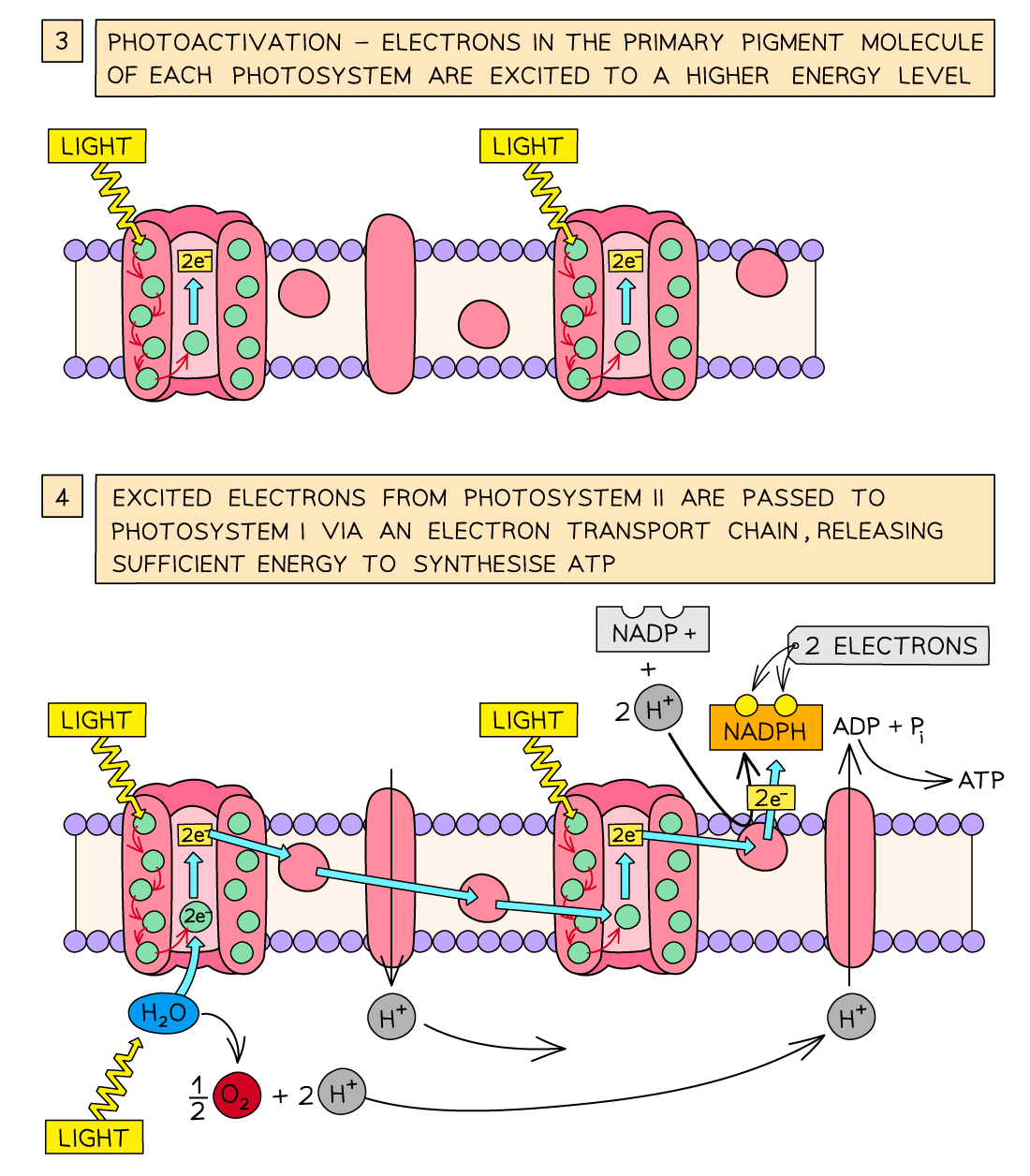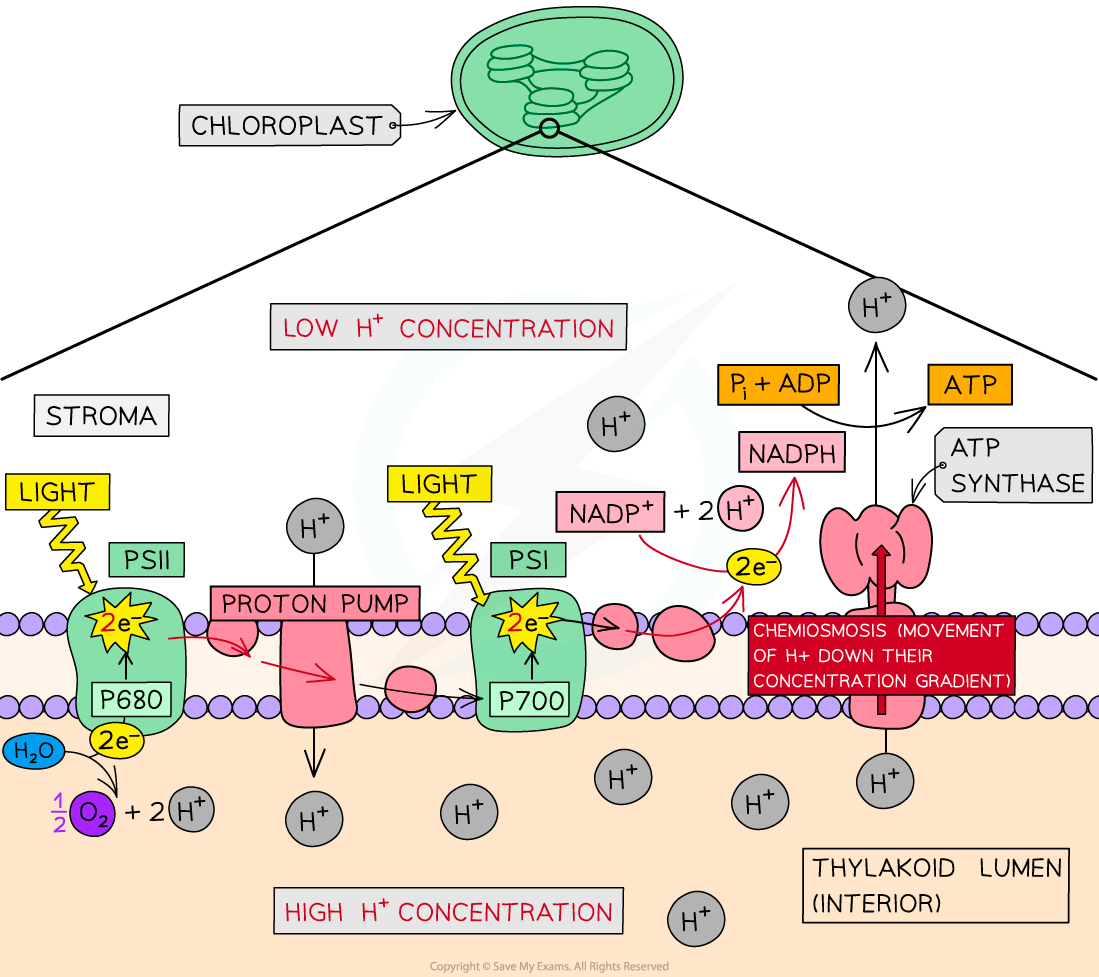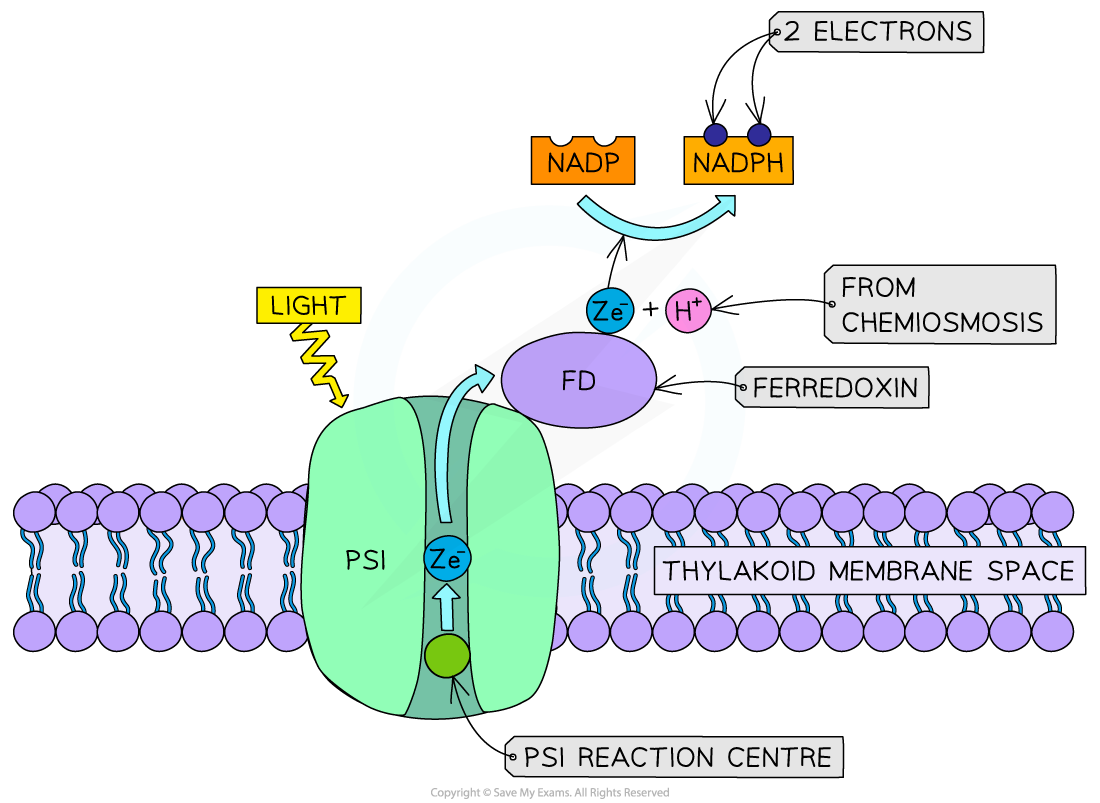- 翰林提供学术活动、国际课程、科研项目一站式留学背景提升服务!
- 400 888 0080
IB DP Biology: HL复习笔记8.3.2 Photophosphorylation
The Electron Transport Chain in Photosynthesis
- Photophosphorylation is the term for the overall process of using light energy and the electron transport chain to generate ATP from ADP
- During photophosphorylation excited electrons (from Photosystem II) are passed down a series of electron carriers that form the electron transport chain
- The electron transport chain occurs on the thylakoid membranes within the chloroplast
- Thylakoid membranes contain the following structures:
- Photosystem II
- ATP synthase
- A series of electron carriers
- Photosystem I
- The reduced plastoquinone (an electron acceptor forming part of the electron transport chain) carries a pair of excited electrons from Photosystem II
- Plastoquinone carries the electrons to the start of a chain of electron carriers
- The electron carriers undergo a series of redox reactions as electrons are gained and lost from each carrier
- Excited electrons gradually release their energy as they pass through the electron carriers which is used to generate a proton gradient
- The excitation of the electrons falls and they are eventually picked up by the reaction centre in Photosystem I
- Finally the pair of electrons are used to reduce NADP (along with protons from the photolysis of water) which is then passed into the light-independent reaction
- The pathway of electrons is linear, photophosphorylation is referred to as non-cyclic photophosphorylation
- ATP and reduced NADP are the main products of photophosphorylation and are immediately passed to the light-independent reaction



Non cyclic phosphorylation involving the electron transport chain and the production of ATP and reduced NADP
Exam Tip
Remember a redox reaction is one where reduction reactions (gain of electrons or hydrogen, loss of oxygen) and oxidation reactions (loss of electrons or hydrogen, gain of oxygen) happen alternately. This happens along the series of electron carriers in the thylakoid membrane as part of the electron transport chain.
Forming the Proton Gradient
- Electrons are passed from carrier to carrier in the electron transport chain
- As they do so they release energy which is used to pump protons from the stroma across the thylakoid membrane and into the intermembrane space (also known as the the thylakoid lumen)
- The protons move via a proton pump
- A high concentration of protons builds inside the intermembrane space creating a concentration gradient
- Photolysis of water contributes to the proton gradient
Chemiosmosis in Photosynthesis
- The proton gradient within the intermembrane space of the thylakoid powers the synthesis of ATP
- The protons travel down their concentration gradient through the membrane protein ATP synthase
- Energy is released by the movement of protons and is used to make ATP from the phosphorylation of ADP
- This process is called chemiosmosis
- The ATP produced is used in the light-independent reaction

Photophosphorylation and chemiosmosis
Reduction of NADP
- Photosystem I is involved in the reduction of NADP which is a key molecule used in the light-independent reaction
- Chlorophyll molecules in the reaction centre absorb photons of light energy
- Electrons within the reaction centre are photoactivated to a higher energy level
- They are passed to a protein on the outside of the thylakoid membrane called ferredoxin and reduce it
- The reduced ferredoxin, along with protons that have passed through ATP synthase during chemiosmosis, are used to reduce NADP to NADPH (reduced NADP)
- NADP + 2H⁺ + 2e⁻ → NADPH
- The ferredoxin is now oxidised and free to be reused in this reaction again
- Reduced NADP now carries a pair of electrons and can be passed into the light-independent reactions of photosynthesis

Reduction of NADP in Photosystem I
转载自savemyexams

早鸟钜惠!翰林2025暑期班课上线

最新发布
© 2025. All Rights Reserved. 沪ICP备2023009024号-1








